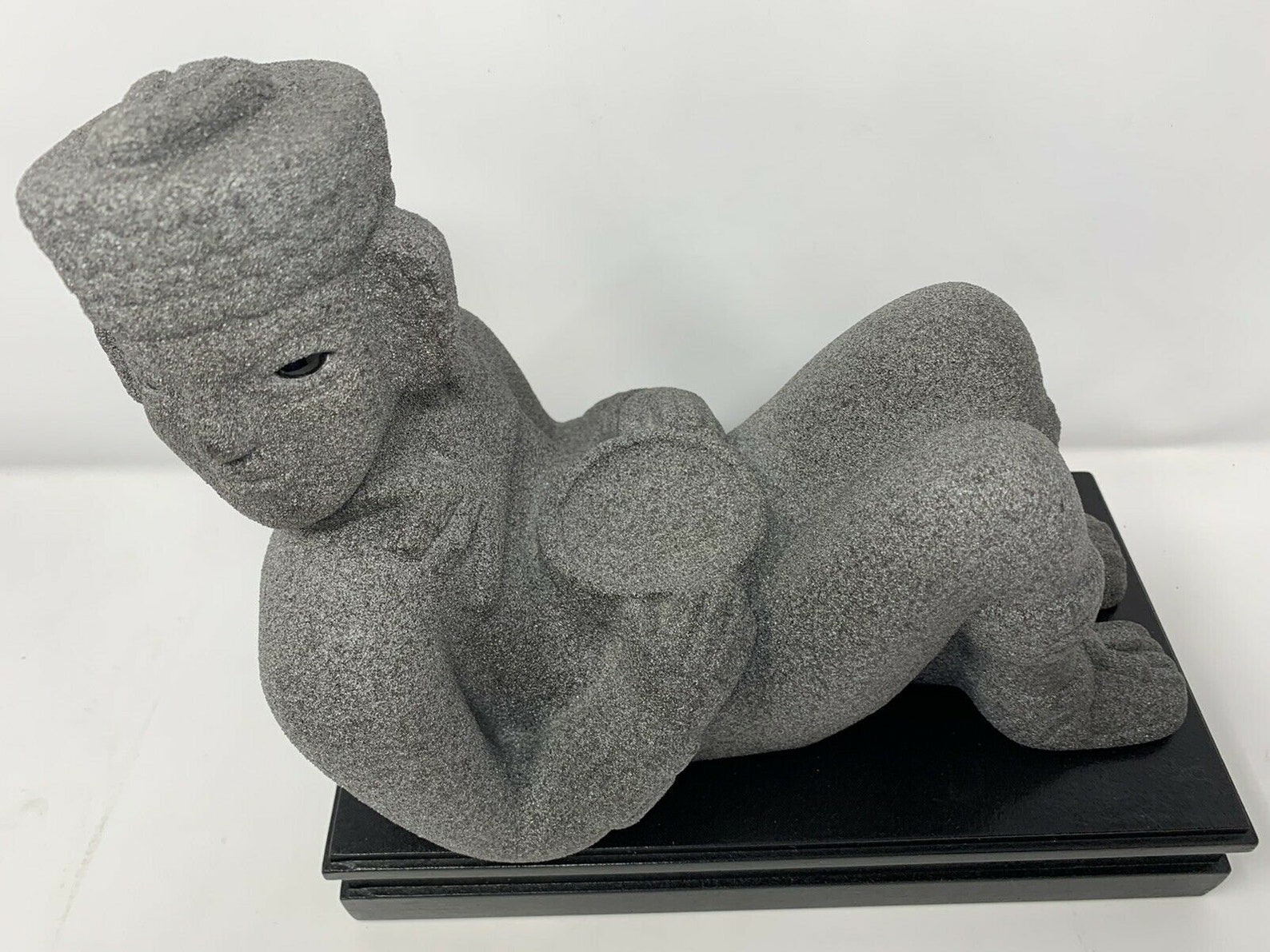

Born Katherine Mordaunt in 1919, she went by Kitty. Overstreet was real enough, though her identity changed several times as well. Overstreet…a real airline hostess,” as the caption described her-was promoting the museum’s upcoming “cruise” for Minneapolis schoolchildren, in which she would pose as their airline stewardess-guide.

When this photo was taken by a Minneapolis Tribune photographer in December 1949, and run in the newspaper on January 8, 1950, Chac Mool was still very much in good standing-or reclining. “When I first saw this sculpture in storage many years ago, it seemed almost laughably bad,” she said at the time, “and now it’s hard to believe so many were taken in by it for so long.” Molly Huber, the assistant curator of the renamed Department of African, Oceanic, and Native American Art, included the sculpture in a 2010 exhibition called “In Pursuit of a Masterpiece,” as an instructive counter-example. No one else on staff, over several decades, had reason to be suspicious. The spoiler was the museum’s first curator of what was then called the primitive art department. Only in the 1970s was his true nature revealed: He was a fake, and not even a good one. It does not store any personal data.Chac Mool now reclines in museum storage. The cookie is set by the GDPR Cookie Consent plugin and is used to store whether or not user has consented to the use of cookies. The cookie is used to store the user consent for the cookies in the category "Performance". This cookie is set by GDPR Cookie Consent plugin. The cookie is used to store the user consent for the cookies in the category "Other. The cookies is used to store the user consent for the cookies in the category "Necessary".

The cookie is set by GDPR cookie consent to record the user consent for the cookies in the category "Functional". The cookie is used to store the user consent for the cookies in the category "Analytics". These cookies ensure basic functionalities and security features of the website, anonymously. Necessary cookies are absolutely essential for the website to function properly. Chac Mool sculpture at Chichén Itzá, Yucatán, Mexico. Though certain works show his awareness of the Romanian sculptor Constantin Brancusi and the Cubist sculptors, the most important influence on Moore’s work at this time was that of ancient Mexican stone carving. What are a few of the major influences on Henry Moore’s artwork? In the late 1960s and 1970s, lalanne created a limited number of sheep entirely made with black wool, some offered as a present from the de menil family to the lalannes’ friend, artist bill copley. The sketches are often made with a ballpoint pen, with swirling lines and zig zags. Henry Moore, Shorn Sheep with Lamb, 1974, Tate, London, UK. He is renowned for his semi-abstract monumental bronzes, which can be seen all over the world. Henry Spencer Moore (1898-1986) was one of the most important British artists of the twentieth century and arguably the most internationally celebrated sculptor of the period. How many drawings did Henry Moore draw?Īlthough Henry Moore is best known as a sculptor, he was an exceptionally talented and prolific draughtsman, producing a body of nearly 7,500 drawings over seven decades. These maquettes often began as small forms shaped by Moore’s hands-a process that gives his work an organic feeling.
Chac mool drawing full size#
Sheep Piece is a sculpture by Henry Moore made in three sizes from 1969-1972, starting in 1969 with a 14 centimetres (5.5 in) maquette (LH 625) modelled in plaster and then cast in bronze, enlarged in 1971 to a 142 centimetres (56 in) working model (LH 626) in plaster and then cast in bronze, and finally a full size … How did Henry Moore make his drawings?īy the end of the 1940s, he produced sculptures increasingly by modelling, working out the shape in clay or plaster before casting the final work in bronze using the lost wax technique. He liked the fierce involvement direct carving brought with materials such as wood and stone. He abandoned the process of modeling (often in clay or plaster) and casting (often in bronze) that had been the basis of his art education, and instead worked on materials directly.


 0 kommentar(er)
0 kommentar(er)
